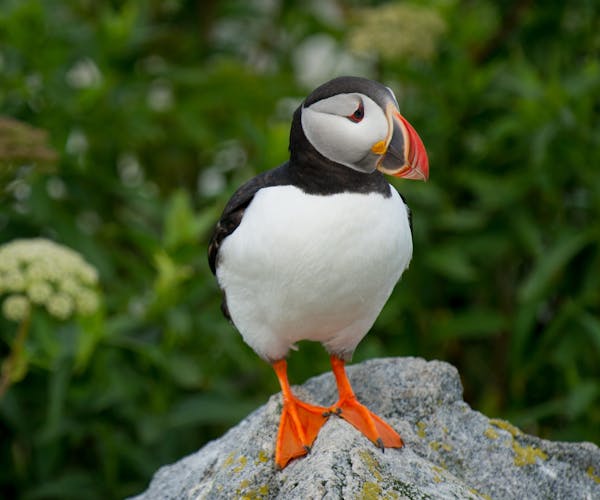Have you heard of that bird? Puffin!
Atlantic puffins have penguin-like coloring but they sport a colorful beak that has led some to dub them the “sea parrot.”

What about Atlantic Puffin?
The Atlantic puffin, also known as the common puffin, is a species of seabird in the auk family. It is the only puffin native to the Atlantic Ocean; two related species, the tufted puffin and the horned puffin, are found in the northeastern Pacific.

The Atlantic puffin breeds in Iceland, Norway, Greenland, Newfoundland, and the Faroe Islands, and as far south as Maine in the west and parts of Great Britain in the east. The Atlantic Puffin is most commonly found on the Westman Islands, Iceland.
Taxonomy and etymology of the Atlantic Puffin
The Atlantic puffin is a species of seabird in the order Charadriiformes. It is in the auk family, Alcidae, which includes the guillemots, typical auks, murrelets, auklets, puffins, and the razorbill.

How beautiful it looks...
The Atlantic puffin is sturdily built with a thick-set neck and short wings and tail. It is 28 to 30 cm (11 to 12 in) in length from the tip of its stout bill to its blunt-ended tail. The male is generally slightly larger than the female, but they are coloured alike.

Want to see one? Where to find Atlantic Puffin
The Atlantic puffin is a bird of the colder waters of the North Atlantic Ocean. It breeds on the coasts of northwest Europe, the Arctic fringes, and eastern North America. More than 90% of the global population is found in Europe.

Fish-only diet?!
Like many seabirds, the Atlantic puffin spends most of the year far from land in the open ocean and only visits coastal areas to breed. It is a sociable bird and it usually breeds in large colonies.
The Atlantic puffin diet consists almost entirely of fish, though examination of its stomach contents shows that it occasionally eats shrimp, other crustaceans, molluscs, and polychaete worms, especially in more coastal waters. When fishing, it swims under water using its semiextended wings as paddles to "fly" through the water and its feet as a rudder.

More about nesting?
Usually first breeds at about 5 years. Breeds in colonies. Birds often have same mates each year. In courtship, male repeatedly flicks head up and back so that bill points up; may continue for minutes. Members of pair swing bills sideways, clashing them together repeatedly. Nest site is in burrow 3-7' long, or in natural crevice or under rocks. Sometimes one entrance leads to side branches and multiple nests. Both sexes help excavate. Nest in chamber in burrow usually has sparse lining of grass, feathers.
Both parents feed nestlings, carrying fish in bill; may feed fish directly to young at first, later drop them on floor of nest. Young leave nest usually 38-44 days after hatching; usually leave at night, flying directly out to sea.
You find them cute? We do too don't worry, even if this website's content if just for presentation purpose.

Want to hear more about puffins?
Subscribe to our newsletter to get your weekly dose of cute pic.

